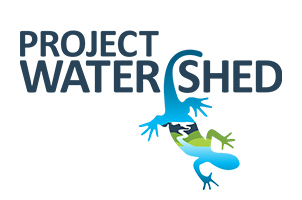Kus-kus-sum Documentary Development
Overview
The Comox Valley Project Watershed Society (Project Watershed) is offering a unique opportunity for a videographer to create a documentary focused on the Kus-kus-sum project. The Kus-kus-sum project is a community initiative led by Project Watershed to acquire and restore an abandoned sawmill to natural habitat in the heart of the Comox Valley. The sawmill, known as Field’s Sawmill, was located on the site between 1949 and 2006. Pre-Colonialism, the area was part of the First Nation village Kus-kus-sum. There is evidence that mortuary poles existed on or around the area.
After many years of planning and negotiating with Interfor Corporation, the K’ómoks First Nation and City of Courtenay, Project Watershed signed a purchase and sale contract with Interfor Corporation in 2017 and began a fundraising campaign to acquire the property. The K’ómoks First Nation and City of Courtenay agreed to jointly own the property, which would eventually transition to full K’ómoks First Nation ownership. On November 30, 2020 Project Watershed completed the purchase of the property and gained title on February 26th, 2021. Project Watershed is holding the title in trust for The K’ómoks First Nation and City of Courtenay. Project Watershed will begin restoration activities in March 2021. Restoration of the site will take 2-4 years depending on funding availability.
The documentary is to include but is not limited to:
- a historical look at the site and its various uses
- the events leading up to the signing of the purchase and sale contract
- fundraising activities to support the purchase and restoration
- the restoration of the site – timelapse of restoration activities (drone images and/or still camera)
- the benefits of restoration
The following are important themes to highlight in the documentary:
- This is a community project and has brought our community together
- The project puts reconciliation into action
- A small organization can make a big difference
- Environmental harm can be undone and nature can recover
- Green infrastructure is an increasingly important community asset
Project Watershed has newspaper clippings, footage and photos that capture many of the events to date and is interested in incorporating these into the documentary..
Documentary Goals
- To create a high quality documentary of the Kus-kus-sum initiative that can be submitted to film festivals and other media outlets to gain attention for this important work
- To create short films during the restoration to help raise funds and share our progress with stakeholders
Scope of Work
- Capture footage of important moments of the Kus-kus-sum project during the restoration period. This will include restoration and fundraising activities.
- Capture, or work with a drone operator to capture, aerial footage to create time lapse sequences of the restoration process on the Kus-kus-sum site. This includes but is not limited to – removing the concrete/asphalt, regarding the site, planting native species, and removing the steel wall.
- Interview key stakeholders including representatives from each of the project partners (K’ómoks First Nation and the City of Courtenay), project donors, volunteers, supporters and members of the general public.
- Highlight the importance of the project to the environment, the local community and reconciliation.
Scope of Work
Submissions accepted until March 19th. The work is to commence immediately. Filming of restoration activities to occur during select times over the spring, summer and fall or 2021, 2022 and 2023. Filming to be scheduled with Project Watershed staff and board members.
Timeline
Submissions and expressions of interest accepted until March 19th. The work is to commence immediately. Filming to be scheduled with select Project Watershed staff and board members.
Tentative Restoration Schedule:
|
Activity |
Estimated Date |
Estimated Duration |
|
Concrete/asphalt removal |
Spring/Summer 2021 |
2-3 months |
|
Soil removal and recontouring |
Summer 2021 |
2 months |
|
Planting upland area 1 |
Fall 2021 |
3 weeks |
|
Soil removal and recontouring |
Spring/Summer 2022 |
3 months |
|
Planting other areas |
Spring/Fall 2022 |
2 months each |
|
Steel wall removal |
Summer 2023 |
3 weeks |
Budget
The budget will depend on the funding available and will be revised each year prior to March 31st. For more information contact Caila Holbrook.
Join Project Watershed
If you are interested in applying please submit your Curriculum Vitae, examples of your work and a cover letter to Caila.Holbrook@projectwatershed.ca
Please note that only those candidates who are invited for interviews will be contacted.
Related Posts
Mallard Creek Restoration Update for 2024
Restoration work in Mallard Creek will continue this year, including invasive removal, restoring connectivity, and trial planting of a new riparian species. Volunteer events starting in September 2024.
Volunteer at Kus-kus-sum Chamber of Commerce Event
We are showing Kus-kus-sum off to businesses in the Valley through a Chamber Business to Business event. We are looking for a few volunteers to assist with this event.
Coastal Plant Monitoring
Get involved with our new vegetation community science monitoring program!
Spring Field Trips
Throughout May and June Project Watershed will be taking elementary school classes out on field trips to learn about estuary and coastal ecology and to assist with planting and plant maintenance.
Working Together to Identify Forage Fish Spawning Beaches
This year marks the 5th year of a partnership between Comox Valley Project Watershed Society and North Island College on a long-term study to examine intertidal spawning habitats of forage fish in the northern Salish Sea.
Glen Urquhart Update – Spring 2024
Latest news from Glen Urquhart restoration progress for spring 2024.


